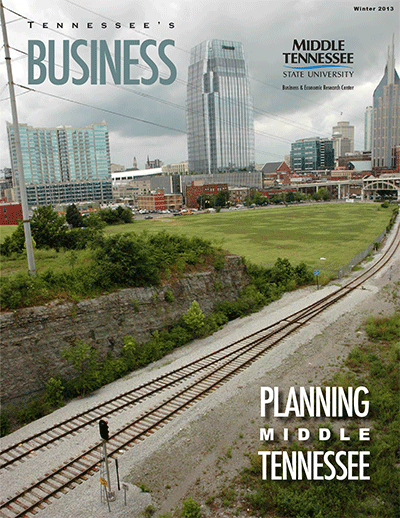Columbia, Tennessee: Comprehensive Planning
Neighborhood Revitalization and Infill Housing Choices
 |
||
The Columbia Housing and Redevelopment Corporation (CHRC) is more than just another housing authority. This relatively small agency has received national awards due to its large accomplishments and even hosted Sandra Henriquez, assistant secretary of the U.S. Department of Housing and Urban Development (HUD). One of the main reasons for CHRC's notoriety is that it is the only comparably sized public housing authority in middle Tennessee that also serves as a redevelopment agency. This distinction, along with great leadership and vision, allows CHRC the power to actively pursue revitalization city-wide and has made CHRC and the City of Columbia a model for incorporating infill housing as part of neighborhood-revitalization efforts. CHRC along with partners in the private and public sector has created a successful model for addressing neighborhood revitalization, infill redevelopment, and creating housing choices and opportunity through the Columbia Comprehensive Plan. Here are a few lessons learned that many communities can incorporate. Add Housing Options to Comprehensive PlansThe redevelopment process in East Columbia began with Columbia's portion of the Joint Comprehensive Plan in 2008 and 2009. The comprehensive planning process was instrumental to providing up-to-date maps, data, and statistics for both the county and municipalities, including Columbia, Mt. Pleasant, and Spring Hill. By capitalizing on existing information obtained through the Joint Comprehensive Plan, the City of Columbia funded an additional $10,000 investment toward the East Columbia Redevelopment and Urban Renewal Plan. Identify Housing NeedsIn 2008 Columbia received a $519,000 HUD Neighborhood Stabilization Program (NSP) grant to replace blighted homes in east Columbia with pre-built housing. Thanks to previous data collected through the Joint Comprehensive Plan, the City of Columbia was able to demonstrate abnormally high home foreclosure rates within particular neighborhoods in its grant application. Columbia also leveraged the Joint Comprehensive Plan recommendations to apply for and receive one of only two HUD Community Challenge grants awarded in the state. The $250,000 grant funded Columbia's James Campbell Boulevard Strategic Corridor Plan. Design to Create Attractive Communities and HousingGood design is critical to the development and redevelopment of communities, particularly when providing a variety of housing types. A broader range of housing types that maintains the character and architectural style of an existing neighborhood not only looks better but enhances overall property values. The City of Columbia chose a type of cottage style, pre-built housing made in nearby Pulaski, Tennessee, for the East Columbia neighborhood. The pre-built homes are not only cost effective but also blend well with the existing housing stock. These homes will eventually replace several dilapidated structures under the NSP implementation. Use Incentives to Promote Housing Choice
|
Table of Contents
In 2008, Columbia received a $519,000 HUD grant to replace blighted east Columbia homes with pre-built housing.
Under CHRC's plan, lower-income single-family homes will eventually |
|
